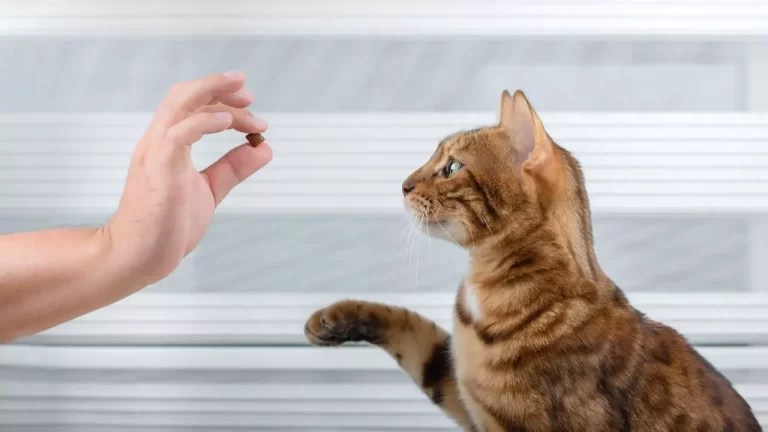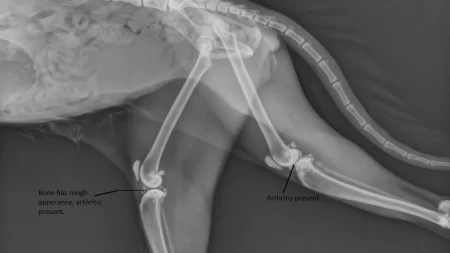Renal failure affects many cats, particularly elderly ones. Toxins and other issues build up when the kidneys can’t filter waste from the blood.
Renal failure cats’ dietary demands and illness stage must be considered while feeding them.
This article will cover feeding cats with renal failure based on the latest scientific research and professional advice.
Understanding Renal Failure in Cats
Renal failure may be acute or chronic depending on its onset and duration. Poisons, infections, and urinary tract obstructions may induce acute renal failure (ARF) within hours or days.
ARF is life-threatening and needs veterinarian care immediately. ARF cats may regain some renal function with medication and supportive care, depending on the source and degree of the impairment.
Persistent kidney disease (CKD) is a gradual decrease of kidney function owing to age-related degeneration, hereditary factors, persistent infections, or other medical problems.
CKD is more frequent than ARF in cats, affecting 10% of all cats and up to 35% of older cats. CKD is permanent and incurable, although diet, medicine, and monitoring may control it.
The degree of renal damage is determined by blood creatinine levels in CKD. The further advanced the CKD stage, the greater the creatinine level.
Renal failure symptoms in cats vary by kind and stage, but they may include:
- Decreased appetite
- Weight loss
- Lethargy
- Vomiting
- Diarrhea
- Dehydration
- Increased thirst and urination
- Bad breath
- Mouth ulcers
- Anemia
- High blood pressure
- Seizures
Renal failure also affects the heart, eyes, brain, bones, and skin. Thus, cats with renal failure require frequent veterinarian visits and blood tests to evaluate and adapt their therapy.
Feeding Guidelines for Cats with Renal Failure
The main goal of feeding cats with renal failure is to provide them with adequate nutrition while minimizing the workload on their kidneys and preventing or delaying further complications. The nutritional requirements for cats with renal failure differ from those of healthy cats in several aspects:
1. Importance of a Kidney-friendly Diet
A kidney-friendly diet is one that is specially formulated for cats with renal failure. It has several characteristics that make it different from regular cat food:
- Lower protein: Protein is essential for cats, but it also produces waste products that need to be filtered by the kidneys. A kidney-friendly diet contains less protein than normal cat food, but it is still high quality and highly digestible to meet the cat’s needs and prevent muscle wasting. The recommended range of protein for cats with renal failure is 28-35% on a dry matter basis.
- Lower phosphorus: When the kidneys fail, phosphorus accumulates in the blood. High phosphorus levels may harm the kidneys, bone loss, and soft tissue calcification. Kidney-friendly cat food has less phosphorus, and generally less than 0.5% dry matter.
- Lower sodium: Sodium is another mineral that helps regulate fluid balance and blood pressure in the body. However, too much sodium can cause dehydration, hypertension, and heart problems in cats with renal failure. A kidney-friendly diet contains less sodium than normal cat food, usually less than 0.4% on a dry matter basis.
- Increased omega-3 fatty acids: Essential fats known as omega-3 fatty acids boast anti-inflammatory and anti-thrombotic properties. These fats defend kidneys from additional harm and enhance organ blood circulation. A diet crafted with kidney health in mind typically packs in more omega-3 fatty acids compared to standard cat food, sourced primarily from fish oil or flaxseed oil.
- Alkaline urine pH: Urine pH indicates bodily fluid acidity or alkalinity. Due to blood acid buildup, renal failure cats’ pee is acidic. This may cause bladder stones, renal damage, and urinary tract infections. A kidney-friendly diet includes potassium citrate or sodium bicarbonate to keep urine pH between 6.6 and 7.0.
2. Nutritional Requirements For Cats With Renal Failure
In addition to the characteristics of a kidney-friendly diet, cats with renal failure may have other specific nutritional requirements depending on their individual condition and stage of disease. Some of these include:
- Calories: Cats with renal failure often have a reduced appetite and lose weight due to nausea, vomiting, and metabolic changes. They need enough calories to maintain their body weight and prevent malnutrition. The caloric intake for cats with renal failure depends on their body condition score, activity level, and disease stage, but it is usually higher than that of healthy cats. A general guideline is to provide 40-60 kcal per kg of body weight per day.
- Water: Cats with renal failure are prone to dehydration due to increased urine output and reduced fluid intake. They need plenty of fresh water to prevent further kidney damage and complications. Water should be available at all times and changed frequently. Canned food can also help increase the water intake of cats with renal failure, as it contains about 75% moisture compared to 10% in dry food. Some cats may prefer flavored water, such as tuna juice or chicken broth, to plain water.
- Vitamins and minerals: Cats with renal failure may lose vitamins and minerals in their urine or have impaired intestinal absorption. Vitamin B complex, iron, calcium, and potassium may be needed to avoid deficits and problems. Some vitamins and minerals are harmful or interfere with medicines, thus supplementing should be done under veterinarian supervision.
- Fiber: Cats with renal failure may have constipation due to dehydration, reduced intestinal motility, or medication side effects. They may benefit from some fiber in their diet to help regulate their bowel movements and prevent fecal impaction. However, too much fiber can interfere with the absorption of nutrients and cause diarrhea or gas. The optimal amount of fiber for cats with renal failure is not well established, but it is usually less than 5% on a dry matter basis.
3. Customizing The Diet Based On The Stage Of Renal Failure
Cats with renal failure have different dietary needs depending on the stage of their disease. The International Renal Interest Society (IRIS) has developed a staging system for cats with CKD based on their serum creatinine levels:
- Stage 1: Creatinine < 1.6 mg/dL
- Stage 2: Creatinine 1.6 – 2.8 mg/dL
- Stage 3: Creatinine 2.9 – 5 mg/dL
- Stage 4: Creatinine > 5 mg/dL
The dietary recommendations for each stage are as follows:
- Stage 1: Cats with stage 1 CKD have normal or slightly increased creatinine values and no clinical symptoms. They don’t require a kidney-friendly diet yet, but they should be watched for changes. They need a nutritious, well-balanced diet.
- Stage 2: Cats with significantly raised creatinine levels may develop renal disease symptoms such as thirst, urination, weight loss, and poor appetite. They should transition to a kidney-friendly diet immediately to reduce disease development and enhance their quality of life. They should be given lots of fluids and monitored for dehydration and increasing symptoms.
- Stage 3: Cats with stage 3 CKD have severely elevated creatinine levels and usually show obvious signs of kidney disease, such as vomiting, lethargy, anemia, or high blood pressure. They need a kidney-friendly diet that is more restricted in protein, phosphorus, and sodium than the one for stage 2 CKD. They also need more water and may need additional supplements or medications to manage their complications.
- Stage 4: Stage 4 CKD cats have high creatinine levels and end-stage renal failure. Poor prognosis and quality of life. A kidney-friendly diet is low in protein, phosphorus, and salt and simple to digest. They require plenty of water and may need euthanasia or extensive supportive care.
Feeding Techniques for Cats with Renal Failure
Due to nausea, vomiting, and taste abnormalities, renal failure cats are hard to feed. To avoid further degeneration, they must be encouraged to consume adequate food and drink.
1. Introduction To Assisted Feeding Methods
Assisted feeding methods are techniques that help cats with renal failure eat more food and water when they are unwilling or unable to do so on their own. They can be used temporarily or long-term, depending on the cat’s condition and prognosis. Assisted feeding methods include:
- Appetite stimulants: These drugs stimulate the cat’s appetite. Orally, intravenously, or transdermally. Mirtazapine, cyproheptadine, and capromorelin stimulate appetite. Due to negative effects and drug combinations, appetite stimulants should be administered under veterinarian care.
- Anti-nausea medications: Anti-nausea drugs diminish cats’ nausea and vomiting by inhibiting brain or stomach impulses. They may be injected, transdermal, or taken orally. Ondansetron, metoclopramide, and maropitant are anti-nausea drugs. Anti-nausea drugs may have negative effects or interact with other drugs, thus they should be administered under veterinarian care.
- Syringe feeding: The cat is fed a liquid or semi-liquid meal using a syringe put into the mouth. Commercially canned food mixed with water, liquid diets, or homemade diets may be used. Slowly and carefully syringe feed the cat, pausing to let it swallow and breathe. Syringe feeding may stress cats and cause aspiration pneumonia if done wrong.
- Tube feeding: An esophagostomy or gastrostomy tube feeds the cat liquid or semi-liquid food. Anesthesia permits tube insertion. Use liquid diets, canned food combined with water, or homemade diets. Tube feeding requires careful tube and insertion site maintenance. Cats that cannot eat may benefit from tube feeding, but it might cause infection, discomfort, or tube displacement.
2. Esophagostomy Tube Feeding And Gastrostomy Tube Feeding
Esophagostomy tube feeding and gastrostomy tube feeding are two types of tube feeding that are commonly used for cats with renal failure. They have different advantages and disadvantages depending on the cat’s condition and preference.
Esophagostomy Tube Feeding
Esophagostomy tube feeding involves inserting a tube into the esophagus via a tiny neck incision. Sutures and a neckband secure the tube. A syringe or gravity bag may feed the cat liquid or semi-liquid food many times a day via the tube. The tube may provide water, drugs, and nutrients.
Esophagostomy tube feeding has some advantages over gastrostomy tube feeding:
- It is easier and less invasive to place and remove
- It does not require anesthesia
- It does not interfere with the cat’s normal eating behavior
- It allows the cat to taste and smell the food
- It preserves the normal function of the stomach and intestines
Esophagostomy tube feeding also has some disadvantages compared to gastrostomy tube feeding:
- It may cause irritation or infection of the esophagus
- It may cause discomfort or pain in the neck
- It may limit the cat’s mobility and grooming
- It may be more visible and noticeable to the cat and others
- It may require more frequent cleaning and dressing changes
Gastrostomy Tube Feeding
Gastrostomy tube feeding inserts a tube into the stomach via a tiny abdominal incision. Sutures and an abdominal wrap secure the tube. A syringe or gravity bag may feed the cat liquid or semi-liquid food many times a day via the tube. The tube may provide water, drugs, and nutrients.
Gastrostomy tube feeding has some advantages over esophagostomy tube feeding:
- It allows larger volumes and faster rates of feeding.
- It reduces the risk of aspiration pneumonia.
- It does not cause irritation or infection of the esophagus.
- It does not cause discomfort or pain in the neck.
- It is less visible and noticeable to the cat and others.
Gastrostomy tube feeding also has some disadvantages compared to esophagostomy tube feeding:
- It is more difficult and invasive to place and remove.
- It requires anesthesia.
- It interferes with the cat’s normal eating behavior.
- It does not allow the cat to taste and smell the food.
- It may cause complications such as infection, inflammation, or displacement of the tube.







